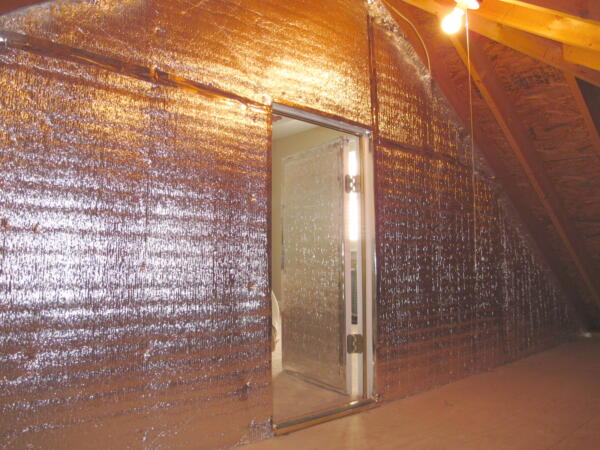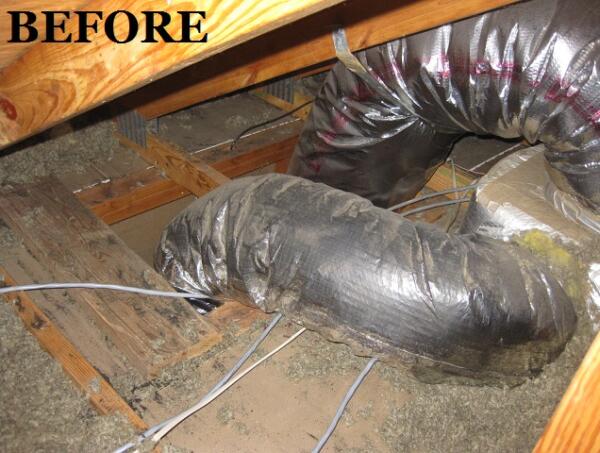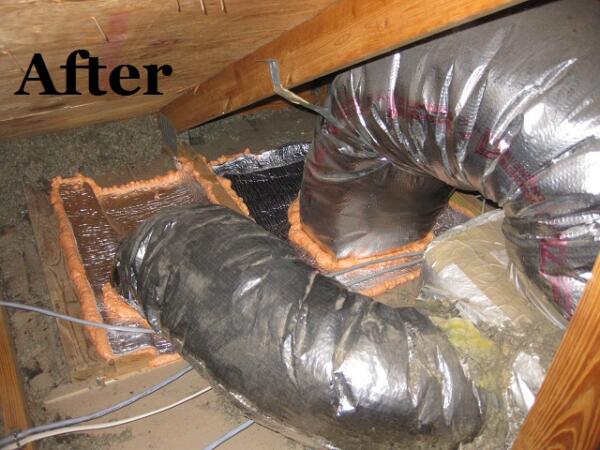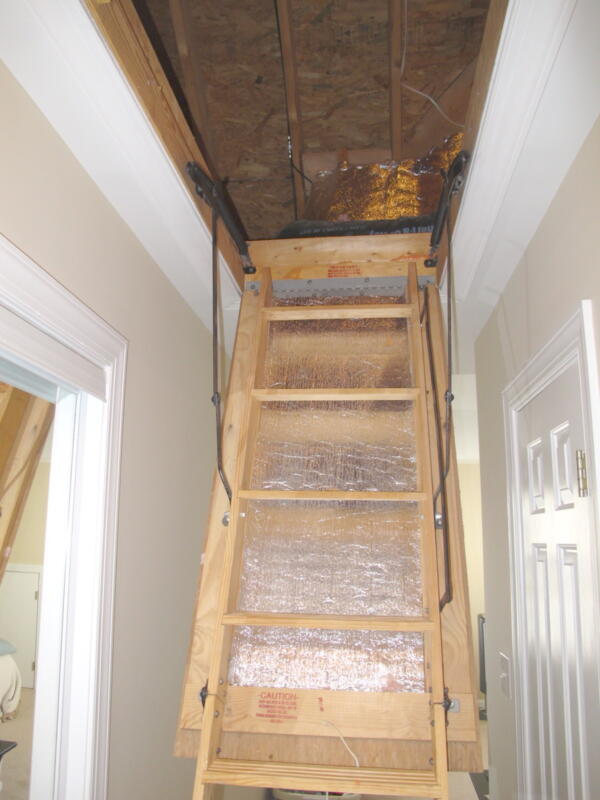Heat moves in 3 ways.
- Convection (air-movement)
- Conduction (direct transfer through solid objects)
- Radiation (light waves move from hot objects to cold objects)
A radiant barrier simply blocks light waves and there are 3 grades to choose from:
- FOIL
- OPEN CELL BUBBLE WRAP
- INSULATING WRAP
- Also, there are companies using aluminum spray coating for this purpose.
Foil as a building product doesn’t pass the “field test”. Foil only, or paper re-enforced foil Radiant Barrier products are really useless in buildings. If you are going to install anything with staples or button caps, it might as well have some durability or insulating qualities to it.
Bubble wrap, available in 1′, 2′ & 4′ widths is great for air-sealing. All you need is scissors and a staple gun. It reflects heat well, but the down side is that the big bubbles do not insulate very well, therefore this product fails to protect against “conduction” when applied to wall studs.
Insulating Wrap. The best product we have found is 1/4″ 4′ x 125′ Rolls of SOLEX RADIANT BARRIER HOUSEWRAP which is durable, great to work with, and can be installed to prevent all three types of heat loss. We love SOLEX; the toughness of the product, getting it is easy, and the color choices and adhesive strips are nice features. We use this product on attic ladders, water tanks, access doors, and crawlspace walls in addition to bonus rooms or other attic wall applications. It is such a great product because it is so versatile.
Spray-On Radiant Barriers are not recommended, if you are considering painting your roof deck, please call us.
Be weary of folks selling radiant barriers. If they propose installing the product against the roof or rafters, you might not get any noticeable results, and you will have adverse effects in some cases. It is more important to complete air-sealing, duct-sealing, sealed crawlspaces, and duct-replacements first. Radiant Barrier is not what some folks say it is! In fact, it is often better to increase attic venting, as opposed to installing radiant barrier materials.
If your home is properly Air-Sealed, and Insulated, it shouldn’t matter what the attic temperature is. If you need air-sealing and insulation, there is likely a logical place where a triple-benefit insulated radiant barrier product would provide the most benefits.
The biggest problem we see with radiant barrier companies is that when the job is complete there are lots of details about the building that are hidden. Maybe the roof deck is hidden, maybe the ceiling joists are hidden, and those are costly problems.
Even the plywood flooring in your attic is a radiant barrier, and at-least you can walk on it. Call for Questions. (919) 413-2326
When we install radiant barriers it is simply a small part of a much bigger home-performance scope. Often when we install a radiant barrier in a home it would not matter if the material is black or silver, because the way we install it, the product Air-Seals and Insulates, and the reflective attributes are purely a bonus.







